Opinion & Analysis
Tom Wishon’s keys to set makeup
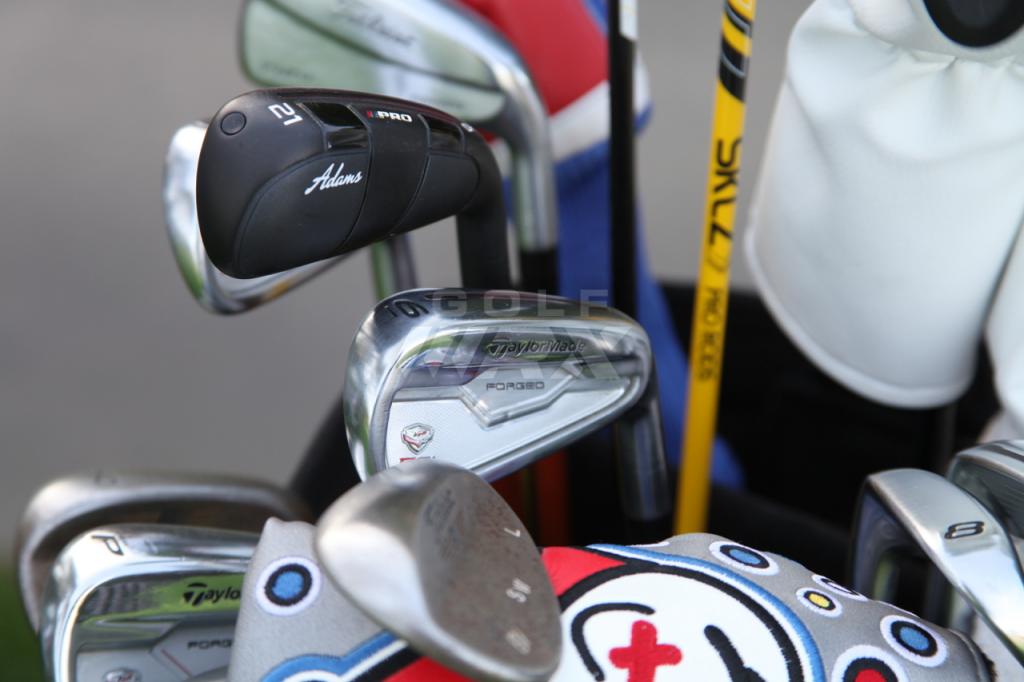
The professional club fitter knows that the set makeup part of the fitting recommendation can be one of the most effective ways to offer measurable improvement to the player, especially for the many millions of average-to-less-skilled golfers.
The reason set makeup fitting has become such a valuable path to game improvement for the average player is simply because of the industry’s move to longer-length woods and lower-lofted irons in the past 30 years.
My experiences have taught me that 3 woods with 14 degrees of loft and 43.5-inch lengths are of little to no help to most average golfers. Neither are many 3, 4 and 5 irons, because of their very low lofts. Yet how many average golfers have these clubs within their current set makeup? Most of them, because of the way so many clubs are sold to average golfers.
It used to be that golfers would buy a driver, 3 wood, 5 wood and a set of irons, 3-PW. Even a recent shift to iron sets of 4-GW still leaves the average golfer with two of the irons with too little loft that many golfers can’t hit well enough to merit carrying them in the bag.
Thus, the common sense goal of set makeup fitting will always be to replace all clubs that the golfer cannot hit consistently well with clubs that hit the ball the same distance, but are easier to hit.
The club fitter’s No. 1 key to set makeup fitting is to find out the lowest-lofted wood and the lowest-lofted iron that the golfer can hit with reasonable consistency in terms of getting the ball up in the air and to fly between the tree lines of the hole. Of these provisos, consistency in hitting the ball well up in the air is key because the fitter can always reduce slice or hook with a length and face angle change in the replacement wood and/or hybrid.
If the golfer cannot hit the 3 wood or 4 wood well up in the air at least 4 of 6 times, the club should not be in the bag. It is far better to have the first wood after the driver be a 5 wood or even 7 wood that the golfer can hit up in the air more than 90 percent of the time and give up a little distance, than to keep hoping for the right swing to be able to hit lower-lofted woods. If the golfer takes lessons and improves, then fine, lower-lofted woods can always be added later.
In terms of the irons, obviously we are talking about replacing low-lofted irons with hybrids or high-lofted fairway woods. Within this is also the matter of what lofts and lengths in the higher-lofted woods are going to deliver the same distance the golfer would have gotten if he or she were to hit the lower-lofted irons well.
Length wise, it is just so much wiser to fit hybrids with the same length as the irons being replaced because that leads to a more consistent distance gap between the lowest lofted iron and the hybrid just above it. Loft wise, it depends on the golfer’s clubhead speed.
The higher the club head speed (typically more than 80 mph with the 6 iron), the more likely it is that the replacement woods or hybrids may need to have a little more loft than the irons being replaced to offer the right distance and distance gap between the last hybrid or fairway wood and the first iron.
As to whether to go to a high-lofted wood or hybrid for the iron replacements, the club fitter consults two things:
- The more the golfer sweeps the ball rather than hits down on the ball, the more likely that high-lofted woods will be a golfer’s iron replacements.
- The golfer’s personal preference/opinion as to whether they are more comfortable or confident with a fairway wood or a hybrid is also key to the selection of the low-loft iron replacement clubs.
Club head speed also plays a role in the set makeup determination. The slower the club head speed, the shorter the distance gap from normal 4-degree loft increments between clubs. Why saddle a slower speed player with a combination of 13 woods and irons when a 4-degree loft gap offers only 6-to-7 yards of difference between each club?
For the good player, set makeup fitting certainly will include some of the same elements for the average player. Not all players who shoot in the 70s can consistently hit the a 3 wood high enough or consistently enough off the deck, nor can they hit a 3 iron (sometimes even a 4 iron) well enough to say it is better to keep it in the bag than an easier-to-hit hybrid that flies the same distance.
For many good players, set makeup fitting has to focus on several other areas:
- Let’s say you can hit your 3 and 4 irons up in the air. Can you stop those shots on the green as well as you could if you hit a higher-launching hybrid that flies the same distance?
- Does your higher club head speed or later release cause a much higher flight with your hybrids so that in high-wind conditions you have control or distance problems? If so, be smart and use hybrids on calmer days and put the lower-lofted irons back in the bag on windy days.
- Players who can get a little off line from day to day might consider replacing their 3 wood and 5 wood with a strong 2 hybrid that is in the area of 40-to-41 inches in length for more control.
- Different horses for different courses. Good players should always have an array of alternative clubs that are better suited to different courses and different hole designs.
Alternative clubs to consider in the set makeup
- A longer-length driver for more wide-open courses and a shorter-length driver for tighter layouts.
- A high-COR, slightly shorter 3 wood or shorter length “mini-driver” for tee shots on courses with more tight par 4s and par 5s.
- A 3 and 4 hybrid for courses with longer par 3s and par 4s that call for long approach shots that have to stick when they land.
- Two drivers — one with less loft, one with more loft — for up and downwind holes on courses where the wind blows frequently and with velocity.
Set makeup fitting is really a test of the golfer’s common sense and control over their ego. To play consistently well, golf shall forever be a game of percentages and good misses. Smart set makeup fitting involves using clubs that give the golfer a higher percentage of consistent shots to improve both the percentage of quality shots and good misses.
Do you think Y.E. Yang feels he is less of a golfer or cares if anyone snickers about the number of hybrids he has been known to carry? At least he didn’t when he beat Tiger Woods at the 2009 PGA Championship at Hazeltine.
As a final note, the wedges are most certainly an area in which set makeup fitting plays a significant role in the golfer’s goal to play to the best of their ability. We’ll cover that later in this series when we discuss the topic of wedge fitting.
Related
- What length should your clubs be?
- What lofts should your clubs be?
- Face angle is crucial for a proper fitting
- The best way to fit lie angle
- How to choose the right club head design
- Tom Wishon’s keys to set makeup
- Getting the right size grip, time after time
- What shaft weight should you play?
- What swing weight should your clubs be?
- What shaft flex should I use?
This story is part of a 10-part series from Tom Wishon on professional club fitting.
- LIKE328
- LEGIT55
- WOW11
- LOL3
- IDHT4
- FLOP5
- OB8
- SHANK10
19th Hole
Vincenzi’s 2024 Zurich Classic of New Orleans betting preview

The PGA TOUR heads to New Orleans to play the 2023 Zurich Classic of New Orleans. In a welcome change from the usual stroke play, the Zurich Classic is a team event. On Thursday and Saturday, the teams play best ball, and on Friday and Sunday the teams play alternate shot.
TPC Louisiana is a par 72 that measures 7,425 yards. The course features some short par 4s and plenty of water and bunkers, which makes for a lot of exciting risk/reward scenarios for competitors. Pete Dye designed the course in 2004 specifically for the Zurich Classic, although the event didn’t make its debut until 2007 because of Hurricane Katrina.
Coming off of the Masters and a signature event in consecutive weeks, the field this week is a step down, and understandably so. Many of the world’s top players will be using this time to rest after a busy stretch.
However, there are some interesting teams this season with some stars making surprise appearances in the team event. Some notable teams include Patrick Cantlay and Xander Schauffele, Rory McIlroy and Shane Lowry, Collin Morikawa and Kurt Kitayama, Will Zalatoris and Sahith Theegala as well as a few Canadian teams, Nick Taylor and Adam Hadwin and Taylor Pendrith and Corey Conners.
Past Winners at TPC Louisiana
- 2023: Riley/Hardy (-30)
- 2022: Cantlay/Schauffele (-29)
- 2021: Leishman/Smith (-20)
- 2019: Palmer/Rahm (-26)
- 2018: Horschel/Piercy (-22)
- 2017: Blixt/Smith (-27)
2024 Zurich Classic of New Orleans Picks
Tom Hoge/Maverick McNealy +2500 (DraftKings)
Tom Hoge is coming off of a solid T18 finish at the RBC Heritage and finished T13 at last year’s Zurich Classic alongside Harris English.
This season, Hoge is having one of his best years on Tour in terms of Strokes Gained: Approach. In his last 24 rounds, the only player to top him on the category is Scottie Scheffler. Hoge has been solid on Pete Dye designs, ranking 28th in the field over his past 36 rounds.
McNealy is also having a solid season. He’s finished T6 at the Waste Management Phoenix Open and T9 at the PLAYERS Championship. He recently started working with world renowned swing coach, Butch Harmon, and its seemingly paid dividends in 2024.
Keith Mitchell/Joel Dahmen +4000 (DraftKings)
Keith Mitchell is having a fantastic season, finishing in the top-20 of five of his past seven starts on Tour. Most recently, Mitchell finished T14 at the Valero Texas Open and gained a whopping 6.0 strokes off the tee. He finished 6th at last year’s Zurich Classic.
Joel Dahmen is having a resurgent year and has been dialed in with his irons. He also has a T11 finish at the PLAYERS Championship at TPC Sawgrass which is another Pete Dye track. With Mitchell’s length and Dahmen’s ability to put it close with his short irons, the Mitchell/Dahmen combination will be dangerous this week.
Taylor Moore/Matt NeSmith +6500 (DraftKings)
Taylor Moore has quickly developed into one of the more consistent players on Tour. He’s finished in the top-20 in three of his past four starts, including a very impressive showing at The Masters, finishing T20. He’s also finished T4 at this event in consecutive seasons alongside Matt NeSmith.
NeSmith isn’t having a great 2024, but has seemed to elevate his game in this format. He finished T26 at Pete Dye’s TPC Sawgrass, which gives the 30-year-old something to build off of. NeSmith is also a great putter on Bermudagrass, which could help elevate Moore’s ball striking prowess.
- LIKE8
- LEGIT3
- WOW1
- LOL1
- IDHT0
- FLOP3
- OB1
- SHANK1
19th Hole
Vincenzi’s 2024 LIV Adelaide betting preview: Cam Smith ready for big week down under

After having four of the top twelve players on the leaderboard at The Masters, LIV Golf is set for their fifth event of the season: LIV Adelaide.
For both LIV fans and golf fans in Australia, LIV Adelaide is one of the most anticipated events of the year. With 35,000 people expected to attend each day of the tournament, the Grange Golf Club will be crawling with fans who are passionate about the sport of golf. The 12th hole, better known as “the watering hole”, is sure to have the rowdiest of the fans cheering after a long day of drinking some Leishman Lager.
The Grange Golf Club is a par-72 that measures 6,946 yards. The course features minimal resistance, as golfers went extremely low last season. In 2023, Talor Gooch shot consecutive rounds of 62 on Thursday and Friday, giving himself a gigantic cushion heading into championship Sunday. Things got tight for a while, but in the end, the Oklahoma State product was able to hold off The Crushers’ Anirban Lahiri for a three-shot victory.
The Four Aces won the team competition with the Range Goats finishing second.
*All Images Courtesy of LIV Golf*
Past Winners at LIV Adelaide
- 2023: Talor Gooch (-19)
Stat Leaders Through LIV Miami
Green in Regulation
- Richard Bland
- Jon Rahm
- Paul Casey
Fairways Hit
- Abraham Ancer
- Graeme McDowell
- Henrik Stenson
Driving Distance
- Bryson DeChambeau
- Joaquin Niemann
- Dean Burmester
Putting
- Cameron Smith
- Louis Oosthuizen
- Matt Jones
2024 LIV Adelaide Picks
Cameron Smith +1400 (DraftKings)
When I pulled up the odds for LIV Adelaide, I was more than a little surprised to see multiple golfers listed ahead of Cameron Smith on the betting board. A few starts ago, Cam finished runner-up at LIV Hong Kong, which is a golf course that absolutely suits his eye. Augusta National in another course that Smith could roll out of bed and finish in the top-ten at, and he did so two weeks ago at The Masters, finishing T6.
At Augusta, he gained strokes on the field on approach, off the tee (slightly), and of course, around the green and putting. Smith able to get in the mix at a major championship despite coming into the week feeling under the weather tells me that his game is once again rounding into form.
The Grange Golf Club is another course that undoubtedly suits the Australian. Smith is obviously incredibly comfortable playing in front of the Aussie faithful and has won three Australian PGA Championship’s. The course is very short and will allow Smith to play conservative off the tee, mitigating his most glaring weakness. With birdies available all over the golf course, there’s a chance the event turns into a putting contest, and there’s no one on the planet I’d rather have in one of those than Cam Smith.

Louis Oosthuizen +2200 (DraftKings)
Louis Oosthuizen has simply been one of the best players on LIV in the 2024 seas0n. The South African has finished in the top-10 on the LIV leaderboard in three of his five starts, with his best coming in Jeddah, where he finished T2. Perhaps more impressively, Oosthuizen finished T7 at LIV Miami, which took place at Doral’s “Blue Monster”, an absolutely massive golf course. Given that Louis is on the shorter side in terms of distance off the tee, his ability to play well in Miami shows how dialed he is with the irons this season.
In addition to the LIV finishes, Oosthuizen won back-to-back starts on the DP World Tour in December at the Alfred Dunhill Championship and the Mauritus Open. He also finished runner-up at the end of February in the International Series Oman. The 41-year-old has been one of the most consistent performers of 2024, regardless of tour.
For the season, Louis ranks 4th on LIV in birdies made, T9 in fairways hit and first in putting. He ranks 32nd in driving distance, but that won’t be an issue at this short course. Last season, he finished T11 at the event, but was in decent position going into the final round but fell back after shooting 70 while the rest of the field went low. This season, Oosthuizen comes into the event in peak form, and the course should be a perfect fit for his smooth swing and hot putter this week.

- LIKE12
- LEGIT3
- WOW1
- LOL1
- IDHT0
- FLOP1
- OB1
- SHANK1
Opinion & Analysis
The Wedge Guy: What really makes a wedge work? Part 1

Of all the clubs in our bags, wedges are almost always the simplest in construction and, therefore, the easiest to analyze what might make one work differently from another if you know what to look for.
Wedges are a lot less mysterious than drivers, of course, as the major brands are working with a lot of “pixie dust” inside these modern marvels. That’s carrying over more to irons now, with so many new models featuring internal multi-material technologies, and almost all of them having a “badge” or insert in the back to allow more complex graphics while hiding the actual distribution of mass.
But when it comes to wedges, most on the market today are still single pieces of molded steel, either cast or forged into that shape. So, if you look closely at where the mass is distributed, it’s pretty clear how that wedge is going to perform.
To start, because of their wider soles, the majority of the mass of almost any wedge is along the bottom third of the clubhead. So, the best wedge shots are always those hit between the 2nd and 5th grooves so that more mass is directly behind that impact. Elite tour professionals practice incessantly to learn to do that consistently, wearing out a spot about the size of a penny right there. If impact moves higher than that, the face is dramatically thinner, so smash factor is compromised significantly, which reduces the overall distance the ball will fly.
Every one of us, tour players included, knows that maddening shot that we feel a bit high on the face and it doesn’t go anywhere, it’s not your fault.
If your wedges show a wear pattern the size of a silver dollar, and centered above the 3rd or 4th groove, you are not getting anywhere near the same performance from shot to shot. Robot testing proves impact even two to three grooves higher in the face can cause distance loss of up to 35 to 55 feet with modern ‘tour design’ wedges.
In addition, as impact moves above the center of mass, the golf club principle of gear effect causes the ball to fly higher with less spin. Think of modern drivers for a minute. The “holy grail” of driving is high launch and low spin, and the driver engineers are pulling out all stops to get the mass as low in the clubhead as possible to optimize this combination.
Where is all the mass in your wedges? Low. So, disregarding the higher lofts, wedges “want” to launch the ball high with low spin – exactly the opposite of what good wedge play requires penetrating ball flight with high spin.
While almost all major brand wedges have begun putting a tiny bit more thickness in the top portion of the clubhead, conventional and modern ‘tour design’ wedges perform pretty much like they always have. Elite players learn to hit those crisp, spinny penetrating wedge shots by spending lots of practice time learning to consistently make contact low in the face.
So, what about grooves and face texture?
Grooves on any club can only do so much, and no one has any material advantage here. The USGA tightly defines what we manufacturers can do with grooves and face texture, and modern manufacturing techniques allow all of us to push those limits ever closer. And we all do. End of story.
Then there’s the topic of bounce and grinds, the most complex and confusing part of the wedge formula. Many top brands offer a complex array of sole configurations, all of them admittedly specialized to a particular kind of lie or turf conditions, and/or a particular divot pattern.
But if you don’t play the same turf all the time, and make the same size divot on every swing, how would you ever figure this out?
The only way is to take any wedge you are considering and play it a few rounds, hitting all the shots you face and observing the results. There’s simply no other way.
So, hopefully this will inspire a lively conversation in our comments section, and I’ll chime in to answer any questions you might have.
And next week, I’ll dive into the rest of the wedge formula. Yes, shafts, grips and specifications are essential, too.
- LIKE32
- LEGIT7
- WOW1
- LOL1
- IDHT2
- FLOP3
- OB1
- SHANK3
-

 19th Hole2 weeks ago
19th Hole2 weeks agoDave Portnoy places monstrous outright bet for the 2024 Masters
-

 19th Hole3 days ago
19th Hole3 days agoJustin Thomas on the equipment choice of Scottie Scheffler that he thinks is ‘weird’
-

 19th Hole2 weeks ago
19th Hole2 weeks agoTiger Woods arrives at 2024 Masters equipped with a putter that may surprise you
-

 19th Hole2 days ago
19th Hole2 days ago‘Absolutely crazy’ – Major champ lays into Patrick Cantlay over his decision on final hole of RBC Heritage
-

 19th Hole3 weeks ago
19th Hole3 weeks agoReport: Tiger Woods has ‘eliminated sex’ in preparation for the 2024 Masters
-

 19th Hole1 week ago
19th Hole1 week agoTwo star names reportedly blanked Jon Rahm all week at the Masters
-

 19th Hole1 week ago
19th Hole1 week agoReport: LIV Golf identifies latest star name they hope to sign to breakaway tour
-

 19th Hole1 week ago
19th Hole1 week agoNeal Shipley presser ends in awkward fashion after reporter claims Tiger handed him note on 8th fairway


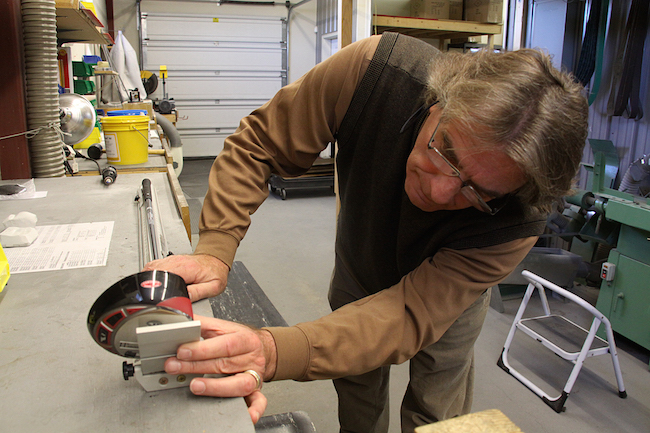



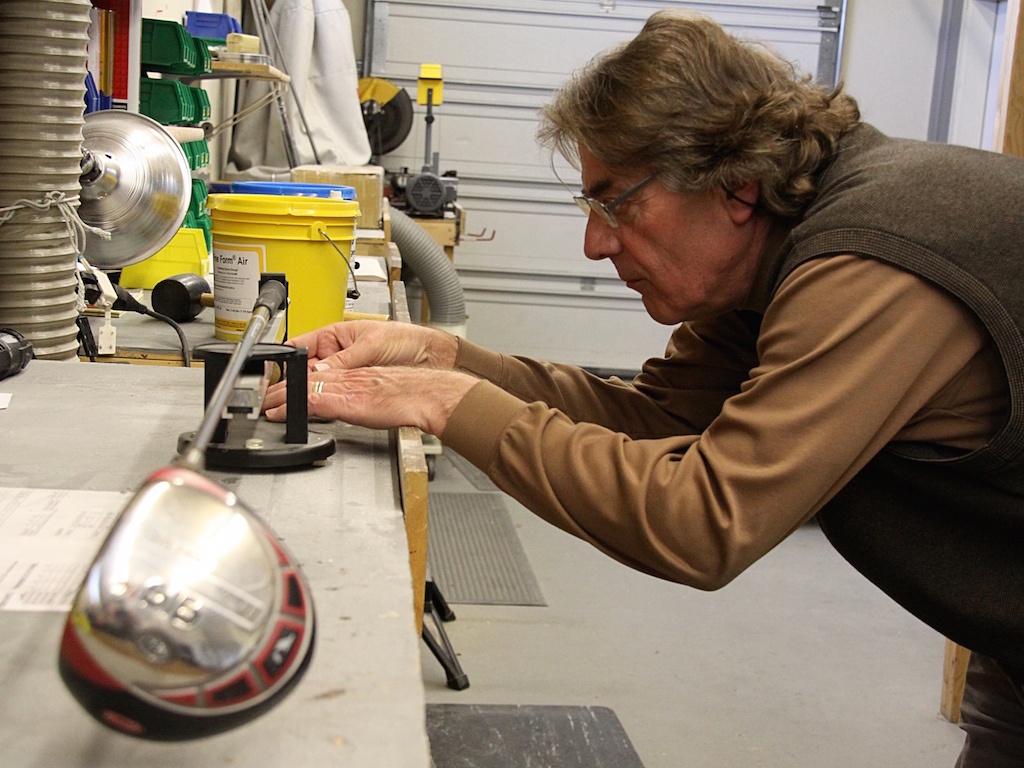

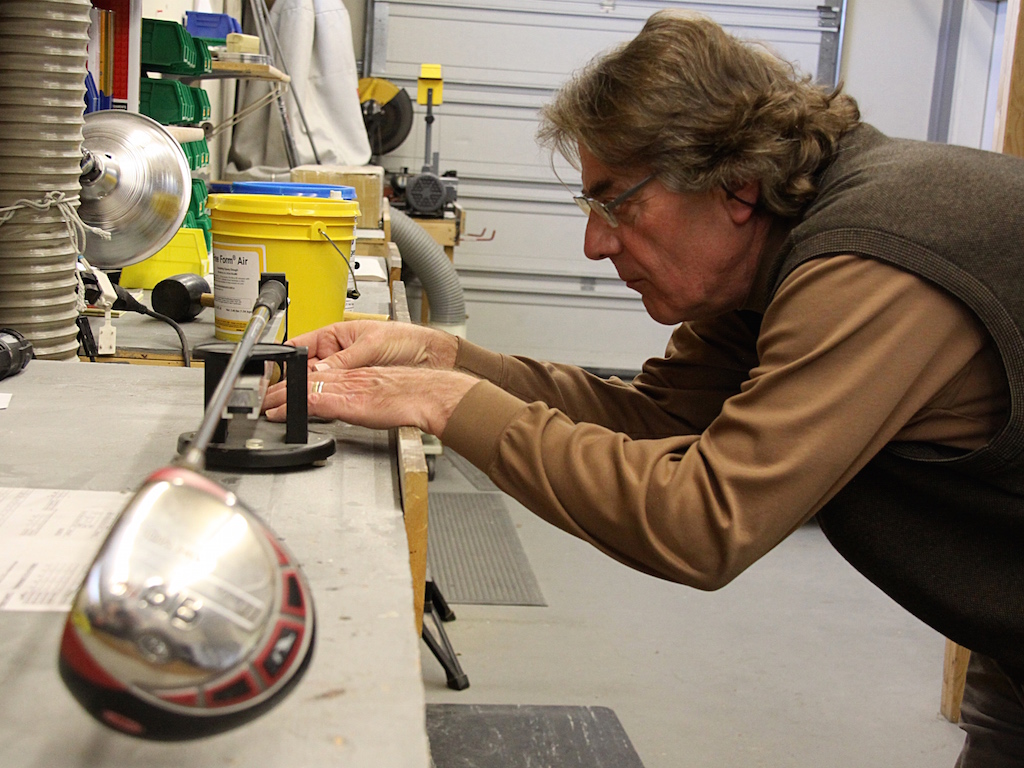
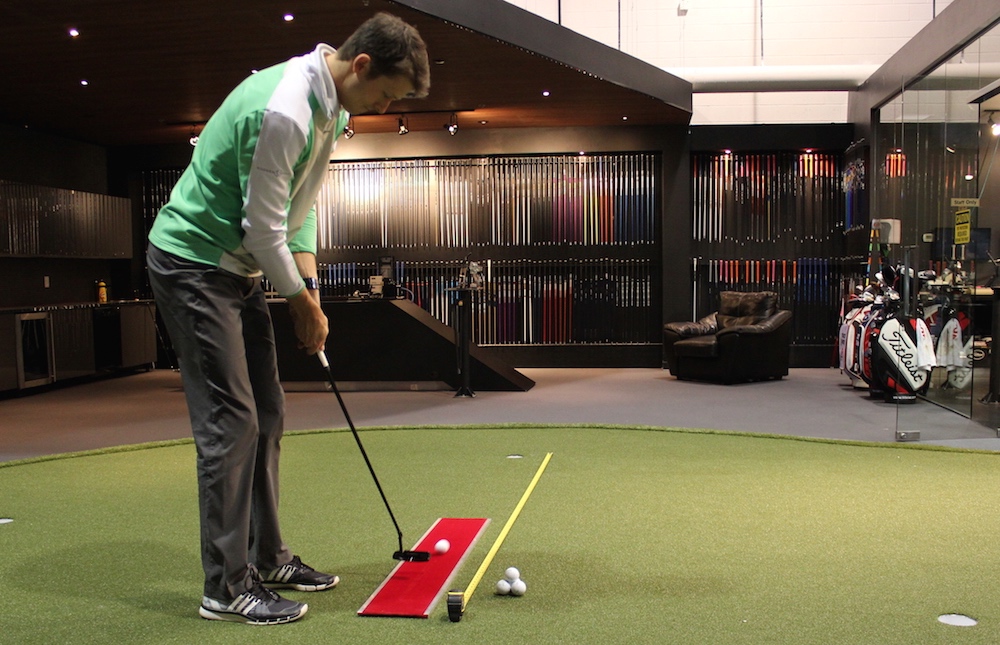
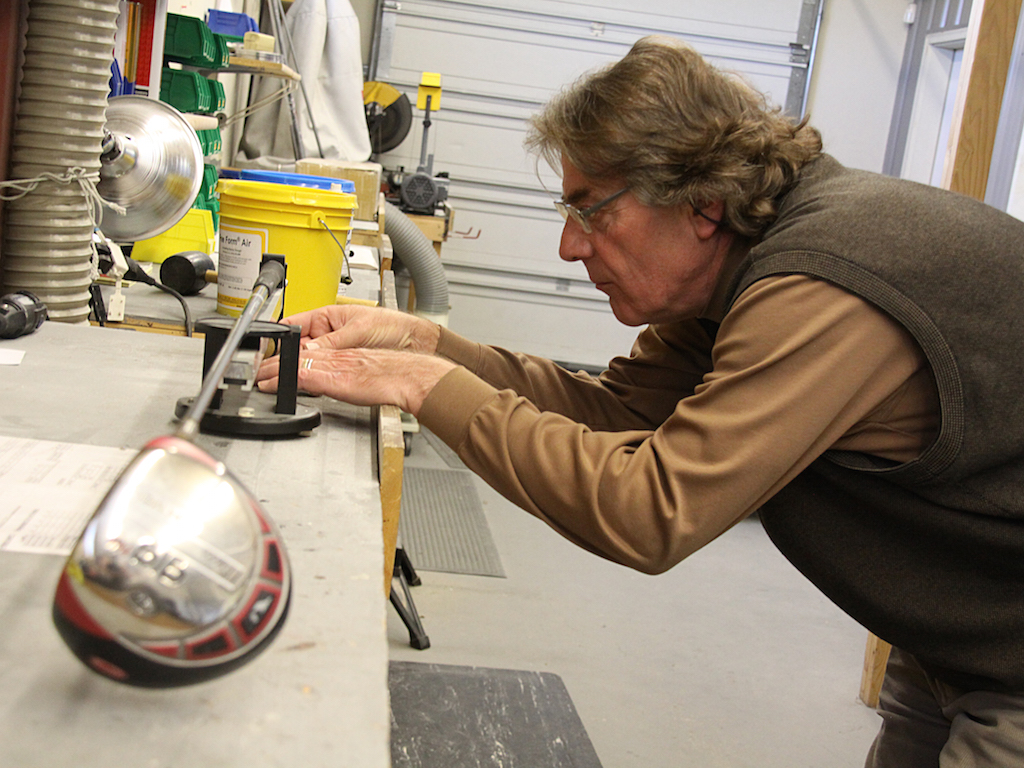












Gerry Teigrob
Apr 11, 2016 at 2:51 am
Tom, I know that we both agree about the importance of a customized set makeup. Just curious how many amateur golfers just get “custom fitted’ at a golf warehouse center such as Golf Town…I have been working with GolfTec and have seen better success there due to a more accurate testing and fitting based on the key dynamics you suggest
That be part of an actual club fitting. I am happy that I got properly fitted, and I have my GolfTec coach, Clinton, to thank! I would suggest that not getting properly fit means you might as well give your golf buddies their money at the first tee!
Gerry Teigrob
Apr 10, 2016 at 5:56 pm
Hi Tom. Just curious how many amateur golfers think that just playing clubs off the rack and getting “fitted” at a golf superstore like Golfsmith or Golf Town is an Ctual fitting? I think that is akin to giving your amateur opponents extra strokes. I have been fortunate to get fitted with my full set of Redline irons and matching hybrids. I am still working with GolfTec to refine things further. I find GolfTec has it right…they understand what it means to be fitted properly and they eliminate the typical bloated shots that I would typically see at GolfTec Town. I highly recommend a complete clubfitting! I appreciate my coach Clinton at GolfTec and I am sure that will definitely put me on the road to golfing success in the summer ahead!
Gerry Teigrob
Apr 10, 2016 at 4:41 pm
Hello Tom. Just curious about set makeup…how poorly do mos
tlmck
Feb 17, 2015 at 2:28 am
I carry a 10.5 degree driver, a 17 degree hybrid, and a 22 degree 4 iron thru SW in 4 degree increments. With my putter, that is 12 clubs which is all I need. I do not swing as fast anymore, but I am still a good ball striker so I can fill in gaps as needed with different types of shots.
jj
Feb 12, 2015 at 1:51 am
Anyone hit the new Grafalloy red for 2015?. I think the specs are the same but different graphics? Just wondering,,,,, love the shaft. Thanks
MT
Feb 11, 2015 at 6:44 pm
Hi Tom,
I have seen your comment on the web that MB irons has no real advantage to CB. Regardless of them having smaller smash factor my observations measured by Trackman are that MB irons are much faster than CB (the bigger CB the faster MB against that – up to 5 mph club speed with the exact same shaft). Can you please give your thoughts on that.
thanks,
Mark
Tom Wishon
Feb 12, 2015 at 10:46 am
MArk:
There is absolutely no scientific basis for an MB iron head design to be able on its own to offer a higher clubhead speed over a CB or any other iron model type. Any slight size difference with the MB being smaller is just not even close to being able to do this. It just can;t happen from the design itself.
When a golfer picks up a different club and automatically achieves a higher clubhead speed, the reasons for this from all of my research into this over the years point toward something in the combination of the length + shaft weight + total weight + headweight + balance point of the club being much better matched to the golfer’s swing timing, tempo, rhythm, sense of feel. Such that with the club the golfer then achieves a much more free, unrestricted timing and rhythm and release of the club that leads to the higher speed. With better players, any of these spec differences do not have to be huge to combine to have this effect. but the only way this can be known for sure would be to have both irons to measure every single one of these specs to then compare them individually to see what’s different.
But I can assure you there is nothing about any aspect of a MB head design vs a CB head design that could be the cause in and of itself of the increase in clubhead speed.
Jeff
Feb 13, 2015 at 6:22 am
Thanks for the article. Sadly by following your advice my bag would have a 5 wood and a 3 iron as my options for driver lol. I can hit my driver all day on the range as soon as I get to the tee box to the trees it goes. How does one improve their over all game If one of the more important clubs in the bag cant ever be used.. I can crush my 3 iron consistently off the tee but that really expensive driver I own really needs some use!
Tom Wishon
Feb 13, 2015 at 12:42 pm
JEFF
The first key in trying to get the driver to be more of a help than a hindrance for golfers who truly struggle with the club is to start all over from scratch with a much more “radical” change to the driver than you have ever tried before. First you want to have the driver not be more than 43″ in length. Then to experiment with the headweight using lead tape to add a little, hit shots, add a little, hit shots and look for when you start to notice that you truly can FEEL the presence of the head during the swing, but yet it is not feeling like it is so heavy that you have to make more of a physical effort to swing the club through to impact. Also to be sure the loft on the driver is higher than normal, such as at least 15* of loft. With such a driver, you have a tee shot club that would be much closer to the specs of the 5 wood that you can hit OK. And with the higher driver loft still being lower than the loft on the 5w, and with the 43″ length being probably only around an inch longer than the 5w, you would have a length that is closer to a length you know you can control, but yet has a little bit more length to possibly combine with the loft to get you more distance off the tee than you get when you use the 5w off the tee.
Obviously the best way to get a driver like this is going to be to work with a custom clubmaker who could build such a driver from scratch for you. Hope this helps.
MT
Feb 13, 2015 at 2:16 pm
Thanks Tom. I tested (as I own all of them) the clubs MB, CB and bigger CB on same shafts with same specs such as swing weight etc – all made by the same clubfitter. In fact the feel can be a major contributor to higher speed but I thought it might be something towards transition/release. The same speed difference was experienced by others in front of me. And we are not
MB fanboys trying to find support
for using them. In
fact all of them play some
sort of CB irons.
bwoody01
Feb 11, 2015 at 1:44 pm
Interesting read. I might look for an adjustable 3/4 hybrid now, to change out the 4 iron occasionally. I could see where the explanations might benefit.
Even though I can hit my 4 iron (20.5 degrees) higher when needed, as well as my 2 hybrid (setup at 17.25), I tend to flight the ball lower (on purpose). I live in Texas. We have seasonal strong winds at times here and a high ballooning/ spinning shot is bad news when the wind is up.
‘Texas based players’ tend to have lower launching setups for wind purposes specifically.
I played with Wes Short Jr a couple times and all his launching apexes were very low, regardless of the club he used. It looked like they never got above 25-35 feet for this very purpose. I also watched Angel Cabrera once hitting 4 irons, full swing, on the range at Redstone Golf Club and they never got above 25 feet I bet. They were “in the air” for sure and going at rocket ship speeds. So, maybe factors of where you ‘play your golf’ also come into play.
Some of us don’t have endorsement deals and tour vans following us around to tweak shafts, club heads, lofts, lie angels on the fly, so, I don’t think I am going to do much for my setup on my next round. I know for a fact that the tour pros tweak things during an event and week to week – depending on course set up and weather forecasts. I would guess most of us don’t have this luxury…
No mention of putters here!? I have been informed to use lighter weighted putters for faster less grainier greens and conversely for slower grainier greens. Thoughts?
cdvilla
Feb 11, 2015 at 11:57 am
Plus it’s always fun to go buy gear… 🙂
cody
Feb 11, 2015 at 11:54 am
While i appreciate your insight as a club designer and fitter. This smacks to me a someone pitching that more clubs, to the extent of three drivers, a few fairway woods, a hybrid or three, and an extra wedge if you can fit it in is the way to better golf. Sounds like I need about three sets of clubs to play a single round.
Teaj
Feb 11, 2015 at 1:01 pm
I swap out a 2 iron utility and 3 hybrid depending on the course and conditions ie wind that day so I get his point of having more clubs. if you cannot afford more clubs figure out what best suites your game and the conditions that you play in.
JR
Feb 11, 2015 at 2:18 pm
Smart golfers always have different clubs available for different playing conditions.
Sounds like can learn something from them.
cody
Feb 24, 2015 at 4:56 pm
I didnt say an extra club our two is a bad idea. i just said, based off this article that it sounds like Mister Wishon is proposing a lot more than an extra club.
Gerry Teigrob
Apr 13, 2016 at 8:25 pm
By swapping clubs, Cody, you can in fact change your set makeup without buying a lot of extra clubs. I know some amateur players who are in the Golf Industry and have as many as 7 or 8 sets but they are donated to them by golf manufacturers. Most of us are fortunate to have two sets, leave alone one! I prefer two sets to prepare for as my game improves. Few actually have that luxury. I can see where Tom’s coming from!
Dave
Feb 11, 2015 at 11:38 am
Tom-
Thanks for all of this detailed insight so far! As a teaching professional I constantly straddle a line between what I can teach a student to do, and what changes I can make in their equipment to better suit their game. I’ll admit that I have probably “unsold” many a new set of clubs to students who were certain that new technology was their golden ticket to breaking their personal bests. All too often when comparing a set of clubs to their own, we just didn’t see enough difference to justify the (high) cost. I will however say, that properly gap fitting a player hasn’t been something I do often enough.
I am curious about your statement of finding the longest controllable club. How would you feel about fitting a high handicapper with only those clubs that they can hit consistently (relatively speaking) 75% of the time. How would someone’s scores change if say the longest club they ever hit off the ground were a 6 iron? Never giving them the option to even attempt a 3-hybrid off the grass until they can prove their skill.
I would also like to know solely based on clubhead speeds, is there a minimum loft iron you stop at when fitting?
Thank you for all this great info on proper fitting! Will this be available as a compiled write-up when you are finished or will I need to get copying and pasting?
-Dave
Tom Wishon
Feb 11, 2015 at 2:19 pm
DAVE:
it happens quite frequently with good clubfitters that a golfer who can’t hit a 3, 4, 5 iron can hit a hybrid or fwy wood of the same loft with a higher level of consistency than the iron. The main reason is because fwy woods and hybrids usually have a LOWER center of gravity than the iron and ALWAYS have a much more rear located CG than the iron. Couple that with lengths that are not more than 1″ longer than the irons being replaced and the avg to less skilled golfer has clubs for these lower lofts that they can hit with more consistency than the irons. Not 100% consistent but typically 30-50% MORE consistent than the iron because of these factors.
I’m now making more of an effort to always design a 9w with any set of fwy woods and am thinking of taking that into an 11w as well because you can take a 7w, 9w and 11w and build them shorter than what they normally would be as a fwy wood to be either the same length or 1/2″ to 1″ longer than the iron of the same loft and you do end up with clubs at lofts of 21, 24/25, 27/28 that are most definitely easier to hit than irons of the same loft.
Hybrid wise since there are hybrids out there up through a 6 iron loft, if you fit the golfer with the hybrids of the same loft AT THE SAME LENGTH as the irons he’s struggling to hit consistently, this too can be a very effective way to get clubs into the bag that the golfer can hit more consistently than the irons of those same lengths.
As a designer, I am very much against the std lengths that so many companies build their hybrids to have which are anywhere from 1″ to 2″ or more than the irons of the same loft. When this is done, it creates a distance gap that is too great between the first iron and the last hybrid and it also can duplicate the distance of fwy woods the golfer may have. Longer length is such a killer for avg to less skilled players. By going shorter with the iron replacement clubs, whether they be fwy woods or hybrids, you then complement the lower and more rear located CG of the wood/hybrid with lengths that help offer greater on center hit consistency. And distances then fall into sequence up from the irons much better too.
Fitting is and shall always be more a matter of increasing percentages of improvement, not completely eliminating poor shots. Get a golfer 10 more yards with the driver, reduce his slice by 30%, get him 2-3 more fwys hit per round, 2-3 more greens hit, 3-4 more 2nd shots that get closer to the green than before, and it all adds up a little here and a little there to result in real game and score improvement. Proper fitting will virtually never turn a 22 into an 8, an 18 into a 6, or a 13 into a 5, but it can turn the 22 into a 13-14 or the 18 into a 12-13 or the 13 into a 9, and those levels of improvement most definitely are tangible and will make the golfer enjoy the game more.
Josh
Feb 11, 2015 at 9:19 pm
How should I attempt to have my hybrids (21 and 18*) cut down to be more iron length? From butt end…tip end…combo? Or should have it taken to a club fitter to determine the shafts characteristics? Looking for a cheaper way to get this done.
J.R.
Feb 11, 2015 at 11:09 pm
@Josh:
You generally take the grip off and cut from the butt end, not the tip end.
Then re-grip the club.
That’s the least expensive way to get this done, and it is done very easily as well. Many folks do it themselves if they are DIY’ers, but your local golf shop could do it reasonably cheaply if you aren’t so inclined.
Trimming from the butt causes negligible change in shaft flex characteristics.
As a rule of thumb, I read in a Ralph Maltby article (Golfworks component company founder) that trimming the tip 1/2″ would have the same frequency effect as trimming the butt end a full two inches. In other words, trimming from the tip has four times greater effect on shaft frequency than trimming from the butt end does. Trimming the tip a half inch would usually change most shafts only about a quarter of a flex stiffer, which most golfers wouldn’t even notice.
Thus, you could take two inches off the butt end and still have barely any change in shaft frequency/stiffness. It will, however, make the club swingweight change to a lighter feel, so you may want to add some lead tape to back of the clubhead if you later find that it feels too light. You may not even notice a difference. More experienced golfers generally would, while casual golfers may not.
If even needed, the tape can be purchased at a local golf shop. Then just experiment a bit with strips of tape until you get the feel that you like.
Hope this helps answer your question about your 18* and 21* hybrids.